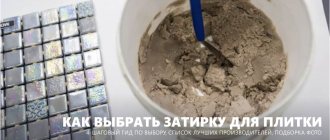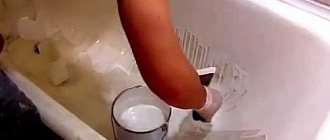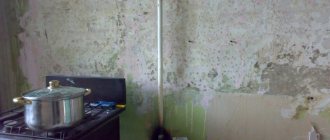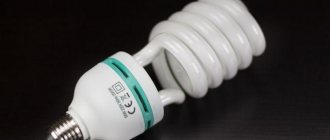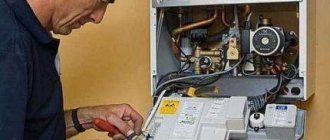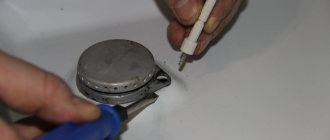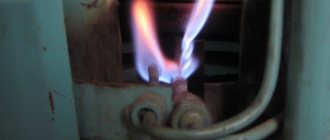Gas equipment is an unsafe device. Therefore, it is necessary to know the signs of various breakdowns in order to quickly eliminate them. The most common cause in gas equipment is a change in the color of the gas combustion. Normally it should be blue. But if you notice that the color has turned red, orange or yellow, and an unpleasant odor has appeared and black soot is falling, then most likely the fire is smoking. If injection is disrupted, orange or yellow colors appear on the flames. This indicates a lack of air.
In our article we will talk in detail about gas combustion and the signs of poor performance of gas equipment.
Gas lights up yellow or orange
An imbalance in the air-fuel mixture occurs for various reasons. The air intake holes may be clogged with dust particles. This creates an obstacle to the passage of air. Gas equipment is most susceptible to plaque in the first year of use. Since after stamping, the ignition group tube and the burner retain an oil film for some time. Therefore, dust sticks and prevents air from passing through, but gas passes through perfectly. There is a large supply of gas to the burner. And the balance is upset when mixing the fuel supply to the burner.
Consequently, the gas enters with dust and soot, which is why the yellow and orange color of gas combustion occurs.
Another main mistake is purchasing gas equipment for a different type of gas. After all, if you use one gas, and your equipment is designed for another, then the yellow color of gas combustion appears.
In a gas stove, the air control valve may fall, jump off, or be closed. Thus, the required amount of air does not flow. If there is not enough oxygen, then not all stoves can burn with electric ignition and have a blue flame. Many people save and lose heat. In this case, it is necessary to repair the gas stove.
Expert advice
Experts say that the likelihood of carbon monoxide poisoning if you follow the rules for operating the equipment is minimal.
What to consider:
- installation and transfer of equipment is carried out by gas company specialists;
- poor-quality ventilation can lead to poisoning;
- regularly check the draft of gas-consuming appliances;
- Do not turn off the automation in devices yourself;
- when working with the stove, open a window for ventilation;
- simultaneous operation of the panel and the hood above it with the window closed disrupts the removal of combustion products;
- Gas stoves cannot be used for heating premises.
Gas burns red
Carbon monoxide is a byproduct of the combustion of absolutely any type of fuel. Gas equipment produces a safe level of gas if the gas produces a blue flame when burned. If the flame turns red or orange, this may indicate increased carbon monoxide emissions. If you experience nausea, headache, or dizziness, these may be signs of carbon monoxide poisoning.
Carbon monoxide, as everyone knows, is colorless and odorless, so the color of the flame must be controlled. If the gas water heater begins to go out and the gas burns red, then it is necessary to clean the equipment. To do this, it is better to call a specialist.
In the past, when there was no gas control system, many people died from carbon monoxide poisoning. Therefore, at the first suspicion of a carbon monoxide leak, you must urgently call the appropriate specialists.
Conclusions and useful video on the topic
It is not always possible to figure out how to clean a gas burner from scale and dirt the first time. The video below offers detailed instructions on how to do this:
So, the normal color of a gas flame is blue. If your burners burn differently, this is a reason to clean them or call a specialist for a more complete diagnosis. You shouldn’t delay this issue, because it’s not just the color of the flame that changes, but the composition of the combustion products.
The accumulation of carbon monoxide can lead to undesirable consequences. Therefore, gas safety issues must be addressed first.
Have you ever experienced a change in flame color? How did you act in such a situation? Leave your comments, share your experience, ask questions - the contact block is located under the article.
The correct color of gas combustion is blue
In order for the gas to burn completely and release the maximum amount of heat, a sufficient amount of air is needed. It is mixed with gas in the burner in the required proportions. Thus, high intensity of heating and heat release will be ensured. If there are any obstacles to the flow of air, the gas does not burn completely and carbon monoxide is released. And the flame turns yellow.
The heating of the coolant and the color of the flame depend on the amount of air supplied. If the right amount of air is supplied, the color of the flame turns blue.
If the air-fuel mixture contains more gas than air, the flame may turn yellow. And after some time it may even turn red or white. This is due to the increased gas supply to the main burner. In this case, incorrect fuel consumption occurs and the burner begins to smoke. If the burner smokes, it will not heat the water, the boiler will not heat the coolant well, a black mark from the gas stove will be left on the dishes, and thus the food will be saturated with sulfur.
Reasons causing the problem
Reason No. 1 - gas does not burn completely
The required color for optimal performance is blue. Other shades indicate problems.
Another reason for poor performance is lack of air. When using a gas stove, it is not advisable to open windows. The rest of the time the room can and should be ventilated.
You can fix a blender at home - step-by-step instructionsKitchen countertops: tips on how to choose, types and ideas
The best refrigerators: ratings, good models for today 2021
Experts also advise not to turn on hoods at the same time as the gas stove. When there is not enough air and the hood is turned on, then a lot of carbon dioxide will accumulate, which negatively affects health.
Reason #2 – clogging
Residues from cooking and simple dust quietly clog the burner. Usually washing occurs from above, and the protective panel or supply pipes are not wiped for many years. New tiles get dirty more often than old ones due to the presence of a sticky oily film. Removing oil is not a quick process, and the consumption at the beginning of work will be higher due to the delay in the supply of air flows.
What to do in such a situation
Once the color of the flame turns orange, red or yellow, you should understand that this indicates danger. Therefore, it is necessary to find the problem and fix it. Once you notice a change in the color of the flame, you should contact a qualified specialist to diagnose and repair the gas device.
It may be necessary to clean the gas equipment, replace the burner nozzles and adjust the air seal in the boiler. You can adjust the air-fuel mixture yourself. This does not require the help of a specialist.
The main requirement before installing gas equipment is the installation of carbon monoxide detection sensors.
It will not be difficult for qualified specialists to eliminate flame smoke. This does not require special tools. If you have the slightest suspicion of a carbon monoxide leak, immediately contact a specialist.
Only prevention will help
How to avoid such situations? Take preventive measures and monitor the condition of gas equipment. Use the stove carefully and clean it regularly.
Read the instructions for your stove model. If the dampers are to blame, then you can fix them yourself. But you shouldn’t climb inside the equipment - entrust this work to specialists.
Before purchasing a new stove, find out what gas mixture is supplied to your apartment; check with your gas supply company. Be sure to check the selected model for this compliance.
We recommend regular maintenance of your gas equipment. During the inspection, specialists from the gas service will check all household appliances and the gas pipeline, find faults and fix them. This way you will extend the life of the gas stove, and also ensure its smooth and efficient operation.
Did your gas glow red? How did you deal with this problem and what advice can you give? Write in the comments, they will help many. Our specialists will also answer all questions.
How to disable?
The gas control function is undoubtedly a very important part for a cooker. Its main advantages are described below.
- Preventing gas leaks – ensuring fire and explosion safety. In different models, the fuel supply shutdown time is not the same: on average it is 60-90 seconds.
- Since gas delivery stops even if the handle is released prematurely, this provides protection for children. As a rule, the child is not able to hold the button long enough for the gas to turn on.
- There is no need to constantly monitor the preparation of the dish. This mode is intended for stoves with electric ignition.
But when turning on a stove with automatic ignition, its handle must be held for some time in order for the flame to ignite. This happens because the thermocouple must heat up before the gas enters the system and the fire ignites.
This time period is different for each manufacturer. For brands such as Darina or Gefest, the waiting time is up to 15 seconds. For Gorenje models, the mechanism operates after 20 seconds. Hansa works faster: the fire is ignited in just 10 seconds.
If you have experience working with similar devices, and their structure is familiar, then you can do this yourself. First of all, you must turn off the gas supply. Then you should open the gas control system, disconnect the thermocouple and remove the solenoid valve.
After this, you need to disconnect the spring from it - the main element that brings the faucet into tone. Then you need to reassemble the mechanism and return it back.
The manipulation is not difficult, but you need to be aware that the work is being carried out with an explosive device. In addition, the regulatory authority may impose a fine if such unauthorized behavior is detected.
If this function is useless for the user, and he is determined to disable it, then it is necessary to call a specialist. After disconnecting, the controller will make an appropriate entry in the device’s operating book, indicating the date and reason for canceling the function.
Cleaning time: proper removal of contaminants from the burner elements
Is the gas burning? flame presence sensors adp-01
There are many methods for cleaning a kitchen stove. Each housewife individually selects the method that is closest to her. Therefore, there is no single recipe for effectively removing food residues, soot and grease.
To keep your stove sparkling clean, you don't have to use expensive chemicals.
Before you begin to remove contaminants from the burners using any method, it is necessary to shut off the gas access to the stove so that a leak does not occur in any case. If you are a user of an electric stove, you should limit the power supply. Next, to protect against burns, check that the oven is cool. Then remove the surface grille.
Many people do not like ready-made chemical solutions because of their aggressive effects and the high risk of allergic reactions. Instead, it is better to use traditional methods that are safe and often remove dirt and grease much more effectively.
It is important to understand the structure of the burner. Its components are a gas burner cover, a divider and nozzles with jets
Contamination must be thoroughly removed from all elements. The next step is to remove the burner cover and disconnect the flame divider. The small openings of the divider should be cleaned with a thin and sharp object, such as a needle or a piece of wire. You can also use a toothbrush. Now you can move on to the main part.
A gas stove has special burners and electric ignition, which also accumulate a lot of grease and dirt.
First way:
- A small container should be filled with hot water.
- Mix water with dishwashing detergent in a 10:1 ratio.
- Depending on the intensity of contamination, soak all burner parts in the resulting solution for 15 to 90 minutes.
- After waiting the required time, you need to put on gloves for further work. These gloves can be purchased at any hardware store or supermarket.
- Using a dish sponge, specifically its hard part, you should clean all components.
- To remove any remaining soap solution, rinse everything with running water.
- Wipe dry or lay out to dry.
You should not use steel wool, as they can seriously damage the surface; in addition to a sponge, it is best to use a toothbrush or cotton swabs for the most difficult to reach areas, such as handles.
If it so happens that the burners have not been cleaned for a long time, then there is a more effective and powerful method for this.
After soaking, it will be much easier to remove the softened dirt.
Second way:
- Perform the above steps for disassembling the parts.
- Add a small amount of nine percent vinegar to a container of water. The mixing ratio is as follows: two parts water to one part vinegar. The resulting solution should be brought to a boil.
- Place the components in the hot solution for about half an hour.
- Be sure to wear rubber gloves to protect the skin of your hands from the adverse effects of the cleaning solution.
- Rub with a regular sponge to remove dirt.
- After all manipulations, rinse all elements under running water to remove any remaining toxic substance.
The solution should remain on the stove for 30-60 minutes, after which it is washed off with a damp sponge.
Don’t forget about another easy but quite effective option for cleaning burners.
If a regular sponge doesn't do the job, use a toothbrush.
The third method is to use the well-known universal assistant in everyday matters - baking soda. The algorithm of actions is almost the same as in the previous options.
- Dissolve one part baking soda in two parts water.
- Next, put the contaminated items into the liquid.
- Wait about half an hour. During this time, the “assistant” will have time to properly separate the dirt from the parts.
- After this, remove the residue manually using a sponge cloth.
- And finally rinse with water.
Each area to be cleaned must be treated with a damp sponge on which soda has been applied; usually even old stains are removed the first time, but if we are talking about hard-to-reach places, you will have to use cotton swabs soaked in a solution of ammonia.
Doesn't light up, gas heater slams
The design of the boiler is quite simple. Natural gas and oxygen from the air in the room are supplied to the burner of the device. At the same time, when turned on, the gas mixture is ignited, the gas ignites and gives off heat to the water.
But even with such a simple mechanism of operation, a variety of breakdowns . The most common ones include the following:
- the device does not ignite, it clicks;
- does not turn on when the tap is opened;
- ignition is carried out, a flame appears in the burner, but after a short time the burner goes out spontaneously;
- the speaker slams during operation, makes a loud noise, and sometimes even vibrates;
- the device works, but the water does not heat up enough;
- water drips from the speaker while maintaining the integrity of the case;
- When turned on, there is a smell of gas.
The consumer can handle some problems himself. But it is important to distinguish what can be done with your own hands , and in which cases it is necessary to invite a specialist.
Most geyser breakdowns must be corrected by a specialist
Even if the owner of the apartment has carefully studied the instructions due to his profession and has a good understanding of how such a device works, he does not have the right to major repairs and replacement of elements.
What you can do/check yourself
Most often, problems arise when the gas water heater does not light up . Causes:
- Poor traction – this difficulty is not related to the column, but with chimney. The latter is a mechanical device and no special permission is required for its repair. Most often, draft is lost if an object is stuck in the chimney or it is clogged with soot. To check its operation, you need to open the window and light a match near the opening of the chimney pipe. If the flame deviates towards the exit, there is draft. If not, you need to call a chimney sweep, because you won’t be able to clean the pipe yourself.
Checking draft with an anemometer - If the device is equipped with automatic ignition, it is possible batteries have fallen into disrepair. Check the operation of the power key. If everything is in order with it, replace the batteries that have become unusable with new ones.
Battery compartment - The burner goes out when low water pressure is an element of system security. Compare the pressure of cold and hot water from the tap. If the cold flow is weak, the reason is in the water supply; if not, it is in the water heater. The reason may be clogging of filters, water pipes, or membrane deformation. The problem needs to be solved step by step. First, they call the utility company to find out how the water is supplied to the line. If within the limits of the standard, they try to clean it: replace the filter in the mixer, wash the filter device, clean the boiler of soot. If the fault remains, call a specialist to flush the pipes.
- When the gas water heater slams when you turn on the water, this is a sign of normal operation . In the short time it takes to ignite, the gas accumulates in a small volume. If there is no sound, this indicates there is no gas. First they call Gorgaz to find out if repairs are being carried out on the line. If not, come here for help.
The second most popular problem is the water heater turning off after a short period of operation or insufficient water heating .
- If the device works for some time, then goes out and turns on again only after 15–20 minutes, most likely the problem is in the heating sensor. It is overly sensitive or the unit is in a room that is too warm and stuffy. In the first case, a new sensor is installed, in the second, it is enough to ventilate the kitchen well.
- If the speaker is working well but suddenly turns off for no reason, it could be an insulation . The boiler can be repaired at the service department.
- If the water does not heat up well, the reason is that the device has insufficient power . You need to buy a new one or supply hot water to the kitchen and bathroom alternately.
It happens that a newly installed water heater does not produce hot water. One option is that the hoses were mixed up during installation . You need to switch the hoses after carefully reading the instructions for the device.
In what cases and where to contact
The specialist must have permission to work with gas equipment.
In certain situations, independent actions are excluded .
- If during piezo ignition you notice a strong smell of gas and does not disappear after the fire ignites, you should immediately turn off the device, turn off the supply of blue fuel and open the windows. A gas leak is extremely dangerous. You need to call emergency services.
- If there is no odor when igniting, but the burner does not light , this indicates a lack of gas. Contact your gas utility for advice.
- The column pops, clicks and whistles during operation for two opposing reasons - excess pressure in the gas pipeline and insufficient pressure . More often this is not due to pressure in the gas supply, but to a burner malfunction . It needs to be cleaned and configured. To do this, call the service center.
- The column may not heat well due to rupture or wear of the membrane . It does not retain cold water, and the latter mixes with hot water. As a result, the water coming out is warm or cool. Only a specialist can fix this damage.
- The column leaks most often due to loose hose connections or wear of the water part . In the first case, replace the rubber gaskets, choosing better ones. Damage to the heat exchanger can be so serious that it will be more profitable to buy a new device than to repair the old one.
Valera
The voice of the construction guru
Ask a Question
It is necessary to invite a service employee or Gorgaz in all cases related to breakdowns and replacement of parts. During installation, the device is sealed, which serves as confirmation of the warranty. If you repair it yourself, the seal is damaged and then the warranty is considered invalid.
Calcium
Calcium is an element of the 4th period and PA group of the Periodic Table, serial number 20. Electronic formula of the atom is 4s2, oxidation states +2 and 0. Refers to alkaline earth metals. It has low electronegativity (1.04) and exhibits metallic (basic) properties. Forms (as a cation) numerous salts and binary compounds. Many calcium salts are slightly soluble in water. In nature, it is the sixth most abundant chemical element (the third among metals) and is found in a bound form. A vital element for all organisms. The lack of calcium in the soil is compensated by applying lime fertilizers (CaCO3, CaO, calcium cyanamide CaCN2, etc.). Calcium, calcium cation and its compounds color the flame of a gas burner dark orange (qualitative detection).
Calcium Ca
Silvery-white metal, soft, ductile. In humid air it fades and becomes covered with a film of CaO and Ca(OH)2. Very reactive; ignites when heated in air, reacts with hydrogen, chlorine, sulfur and graphite:
Reduces other metals from their oxides (an industrially important method is calcium thermia):
Production of calcium in industry:
Calcium is used to remove non-metal impurities from metal alloys, as a component of light and anti-friction alloys, and to separate rare metals from their oxides.
Calcium oxide CaO
Basic oxide. Technical name: quicklime. White, very hygroscopic. It has an ionic structure Ca2+ O2-. Refractory, thermally stable, volatile when ignited. Absorbs moisture and carbon dioxide from the air. Reacts vigorously with water (with a high exo-effect), forms a strongly alkaline solution (hydroxide precipitate is possible), a process called lime slaking. Reacts with acids, metal and non-metal oxides. It is used for the synthesis of other calcium compounds, in the production of Ca(OH)2, CaC2 and mineral fertilizers, as a flux in metallurgy, a catalyst in organic synthesis, and a component of binding materials in construction.
Equations of the most important reactions:
Production of CaO in industry - limestone roasting (900-1200 °C):
CaCO3 = CaO + CO2
Calcium hydroxide Ca(OH)2
Basic hydroxide. Technical name is slaked lime. White, hygroscopic. It has an ionic structure: Ca2+(OH–)2. Decomposes when heated moderately. Absorbs moisture and carbon dioxide from the air. Slightly soluble in cold water (an alkaline solution is formed), and even less soluble in boiling water. A clear solution (lime water) quickly becomes cloudy due to the precipitation of hydroxide precipitate (the suspension is called milk of lime). A qualitative reaction to the Ca2+ ion is the passage of carbon dioxide through lime water with the appearance of a CaCO3 precipitate and its transition into solution. Reacts with acids and acid oxides, enters into ion exchange reactions. It is used in the production of glass, bleaching lime, lime mineral fertilizers, for causticizing soda and softening fresh water, as well as for preparing lime mortars - dough-like mixtures (sand + slaked lime + water), serving as a binding material for stone and brickwork, finishing ( plastering) walls and other construction purposes. The hardening (“setting”) of such solutions is due to the absorption of carbon dioxide from the air.
Equations of the most important reactions:
Production of Ca(OH)2 in industry - slaking of lime CaO (see above).
Rules of operation to prevent repeated violations
Basically, a change in the color of the flame to orange-yellow, green, or red occurs due to insufficient cleaning and design errors.
Therefore, be careful when purchasing equipment.
- Before going to the store, find out what gas is used in the house/apartment.
- After that, ask the sellers which models are designed for your type of gas.
These simple steps will minimize gas discoloration.
You can also eliminate the occurrence of defects by replacing equipment with specialists (they can do the replacement themselves or supervise you). Regular diagnostics of the condition by gas workers will extend the service life and prevent malfunctions. For independent control, you can take a regulator; it will reflect the state of the gas-air mixture. You can also contact professionals for refilling gas cylinders, if you use them - https://ballonis.ru/s-geliem
Following instructions
Household appliances must be used according to the instructions, and a gas stove is no exception. By studying and following the manufacturer's recommendations, you make operation safe and extend the life of the equipment.
Proper care of equipment
Below is the cleaning sequence when incorrect colors appear in the gas.
| 1. | Do not use products containing chlorine |
| 2. | Glass ceramics can be cleaned with soap and water and a sponge. |
| 3. | The surfaces of enamel or metal plates must not be washed with detergents. |
| 4. | To clean the burner openings, use a stiff brush; for the rest of the surface, a simple sponge will do. |
Before turning on the appliance, the surface of the stove must be wiped dry.
To thoroughly clean the equipment, you can look at the structure in the instructions. In addition to the diagram, it describes cleaning options that will allow you to organize everything efficiently.
Dust and food debris that are not immediately removed begin to melt and char, making subsequent cleaning difficult. With each switching on, the work may deteriorate and the equipment may be completely broken. Cleaning the burners daily will prevent them from becoming clogged from the inside.
There is also no need to be shy about contacting gas companies. They will be able to eliminate systematic failures, give advice on operation and extending service life.
